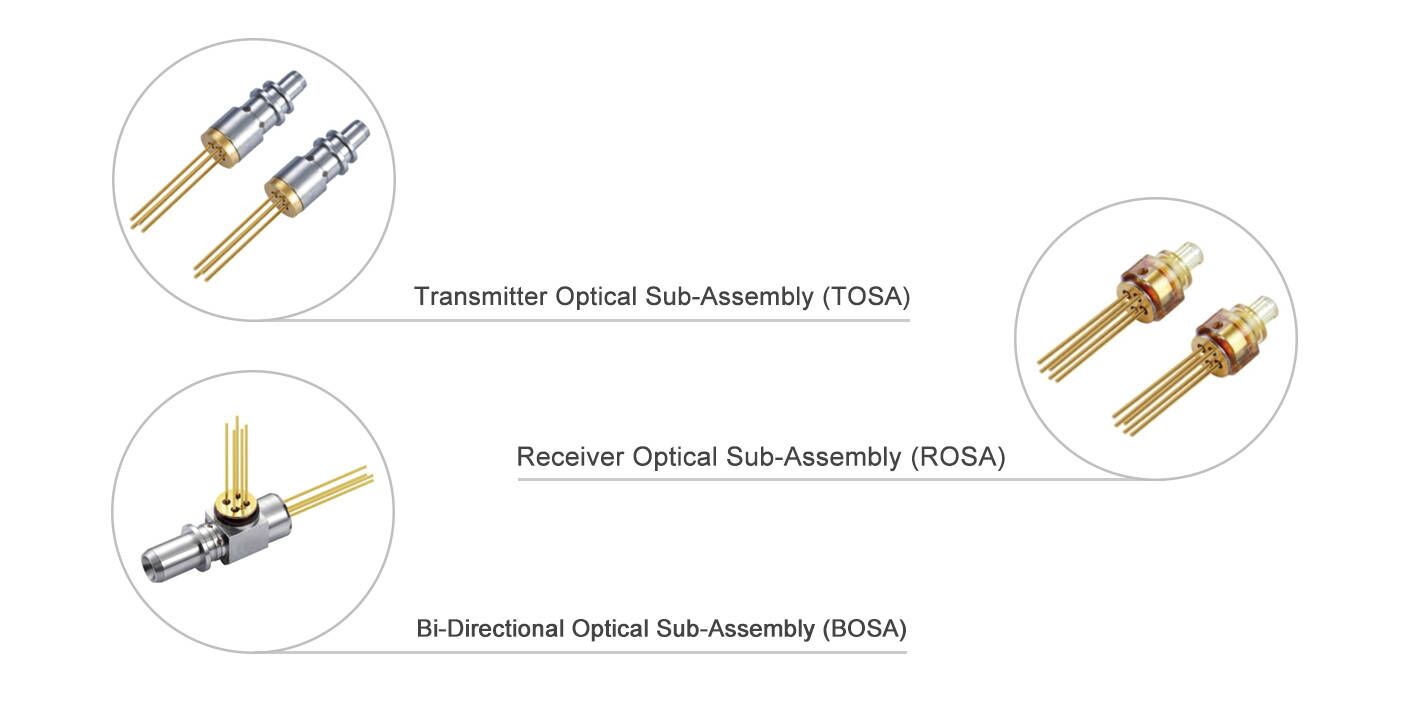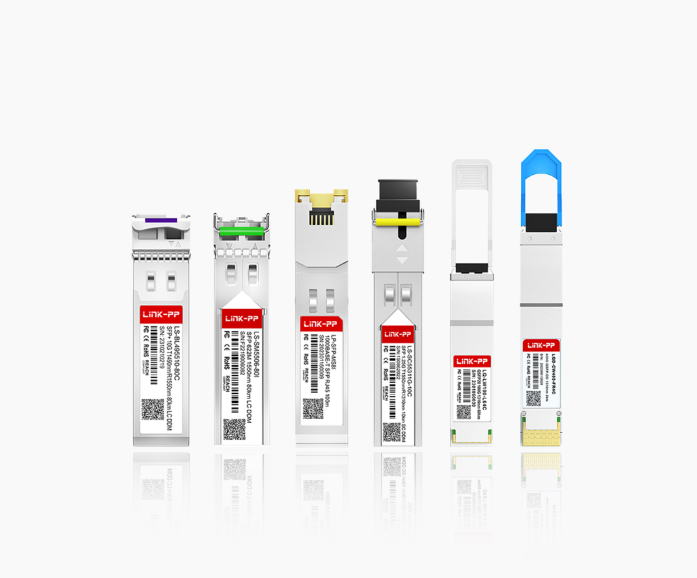
TOSA, ROSA, and BOSA are critical components in optical transceivers. These modules play a vital role in transmitting and receiving optical signals. TOSA ( Transmitter Optical Sub-Assembly), converts electrical signals into optical signals for transmission. ROSA (Receiver Optical Sub-Assembly) performs the opposite function by converting optical signals back into electrical signals. BOSA (Bi-Directional Optical Sub-Assembly) combines the functions of TOSA and ROSA into one unit for two-way communication. Understanding these components is essential for network professionals aiming to optimize performance and reliability in high-speed data transmission environments.
🔹 TOSA: Transmitter Optical Sub-Assembly
TOSA is responsible for converting electrical signals into optical signals for transmission over fiber optic cables. It typically comprises a laser diode (LD), monitoring photodiodes, optical isolators, and sometimes thermoelectric coolers (TEC) for temperature regulation. The laser diode serves as the primary light source, emitting light when driven by an electrical current. Monitoring photodiodes ensure consistent output power, while optical isolators prevent reflected light from disrupting the laser's operation. In applications requiring precise temperature control, TECs maintain optimal operating conditions for the laser diode. TOSA's performance is critical in determining the quality and reach of the transmitted optical signal. Depending on the application, TOSA designs vary:
Laser Types: VCSEL (for short distances), DFB (medium distances), and EML (long-haul networks).
Modulation Techniques: Direct modulation (DML) for cost-effective solutions vs. electro-absorption modulation (EML) for high-speed, low-distortion performance.
🔹 ROSA: Receiver Optical Sub-Assembly
ROSA functions as the counterpart to TOSA, converting incoming optical signals back into electrical signals for processing. It typically includes a photodiode (either PIN or avalanche photodiode, APD), transimpedance amplifier (TIA), and associated circuitry. The photodiode detects the incoming light and generates a corresponding electrical current, which the TIA then amplifies to a usable voltage level. APDs offer higher sensitivity compared to PIN photodiodes, making them suitable for long-distance or low-power signal reception. ROSA's sensitivity and noise characteristics directly impact the receiver's performance, influencing factors like bit error rate and signal integrity.
Key Components
ROSA consists of several components that work together to receive and process optical signals. These include:
Component | Description |
|---|---|
Photodiode | Converts optical signals into electrical signals. |
Transimpedance Amplifier (TIA) | Amplifies the weak electrical signals from the photodiode. |
Optical Interface | Aligns and couples the incoming light into the photodiode. |
Housing | Protects the internal components and ensures durability. |
🔹 BOSA: Bidirectional Optical Sub-Assembly
BOSA integrates both TOSA and ROSA into a single module, enabling bidirectional communication over a single fiber strand. This integration is achieved through the use of wavelength division multiplexing (WDM) filters, which separate the transmit and receive wavelengths within the same fiber. BOSA is particularly advantageous in applications where fiber availability is limited or cost constraints exist, as it effectively doubles the capacity of a single fiber link. By combining transmission and reception functionalities, BOSA simplifies network design and reduces the physical footprint of optical components. This compact design reduces footprint and cost, making it ideal for FTTH (Fiber-to-the-Home) and IoT applications.
Wavelength Division: BOSA uses filters to separate upstream/downstream signals (e.g., 1310nm Tx / 1490nm Rx).
Advanced Variants: Triplexer (1Tx + 2Rx) and Quadplexer designs cater to complex multi-wavelength systems.
🔹 Differences Between TOSA, ROSA, and BOSA
Component | Functionality Description |
|---|---|
TOSA | Transmits optical signals into the fiber optic cable. |
ROSA | Receives optical signals from the fiber optic cable and converts them back to electrical signals. |
BOSA | Combines TOSA and ROSA functionalities with a WDM filter to enable bi-directional communication on a single fiber strand. |
🔹 LINK-PP's Role in Optical Transceiver Technology
As a leading manufacturer in the optical communication industry, LINK-PP offers a comprehensive range of optical transceivers that incorporate advanced TOSA, ROSA, and BOSA technologies. Their products are designed to meet the stringent requirements of modern data centers, telecommunications networks, and enterprise infrastructures. By leveraging high-quality components and adhering to industry standards, LINK-PP ensures optimal performance, reliability, and interoperability across various networking environments.
See Also
Exploring ROSA: Key Component in Optical Modules




